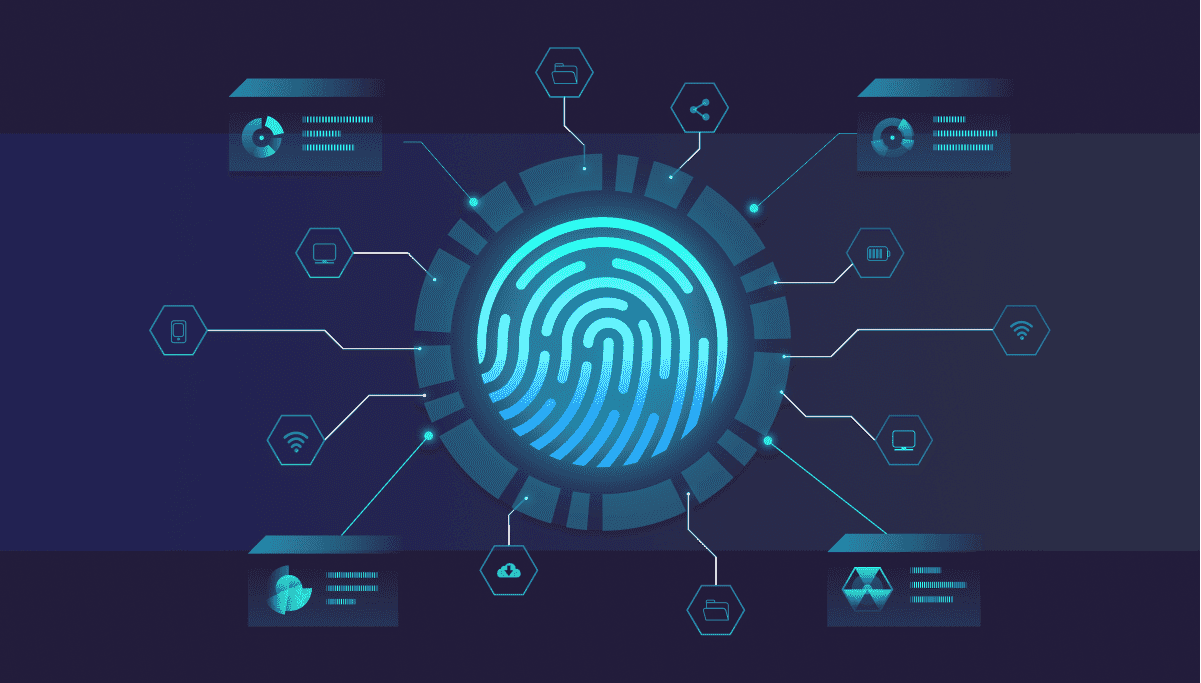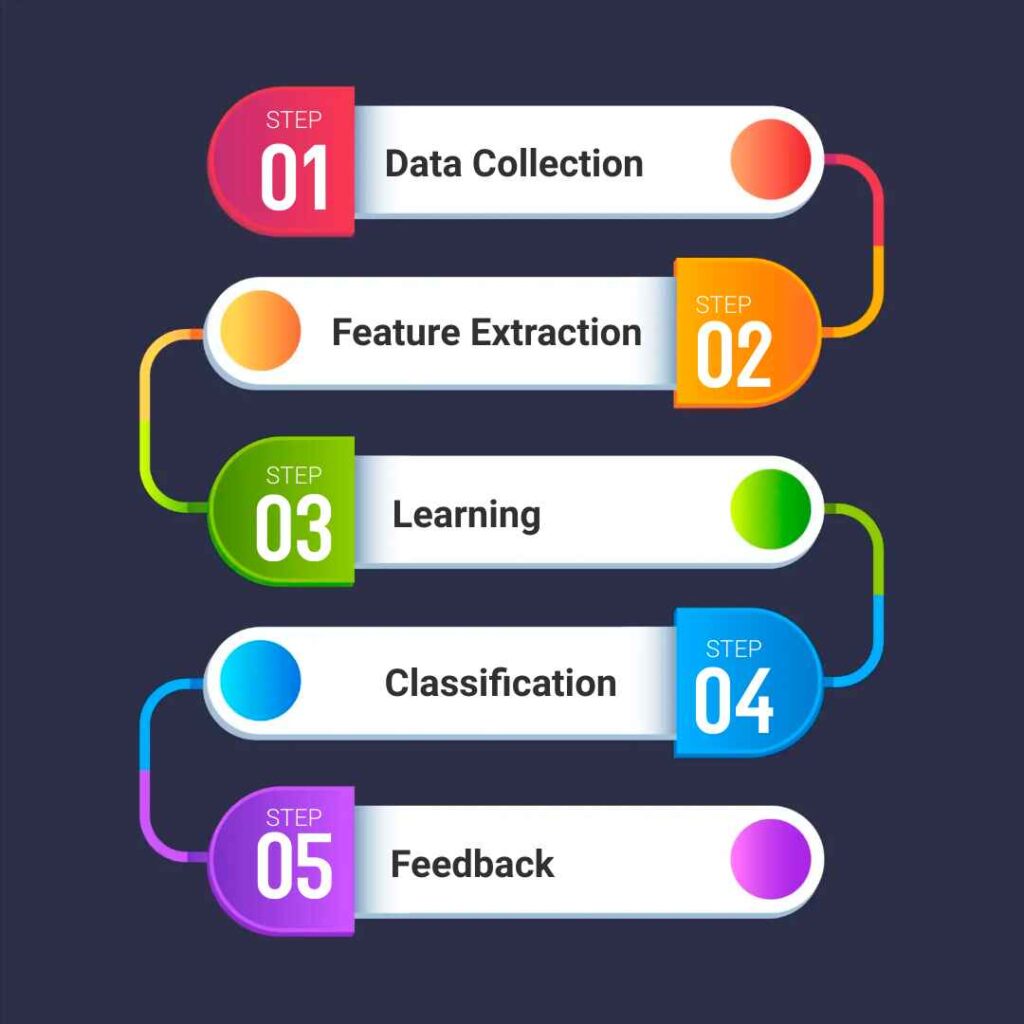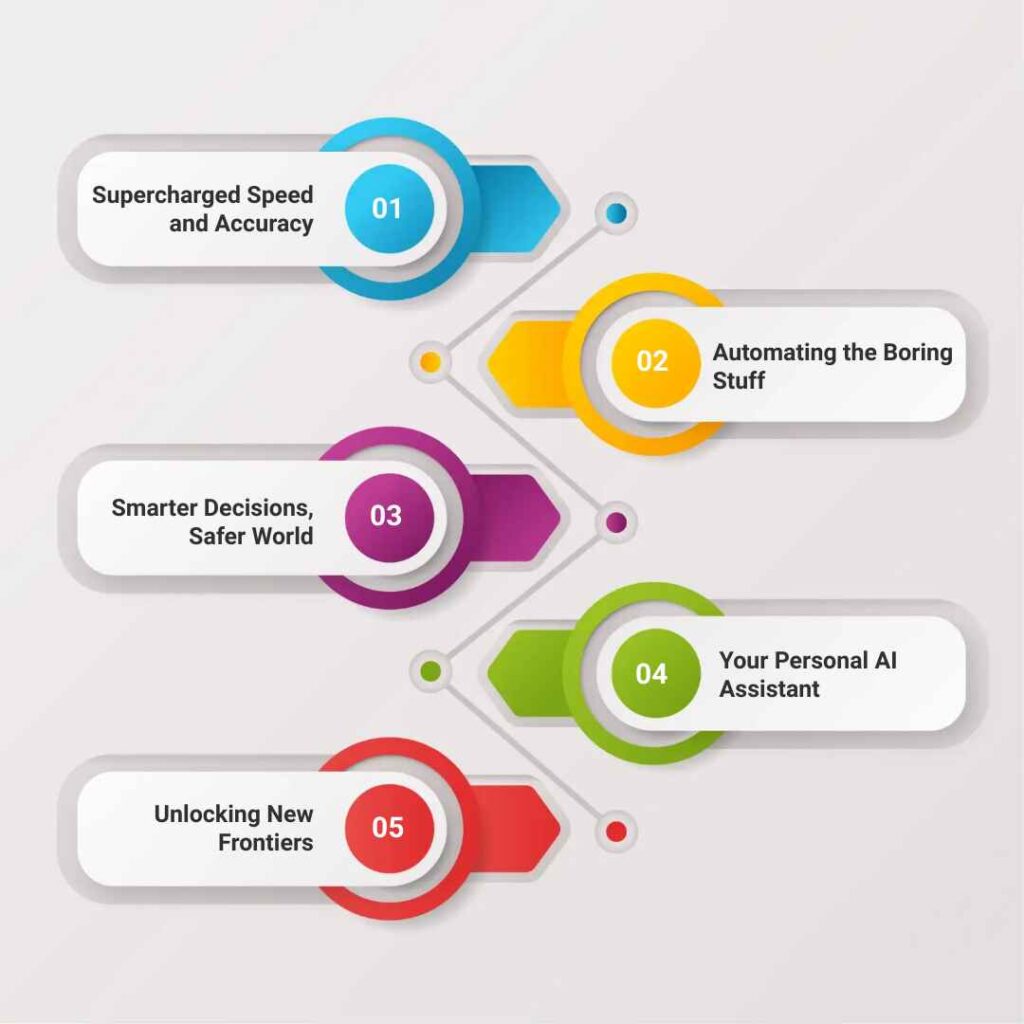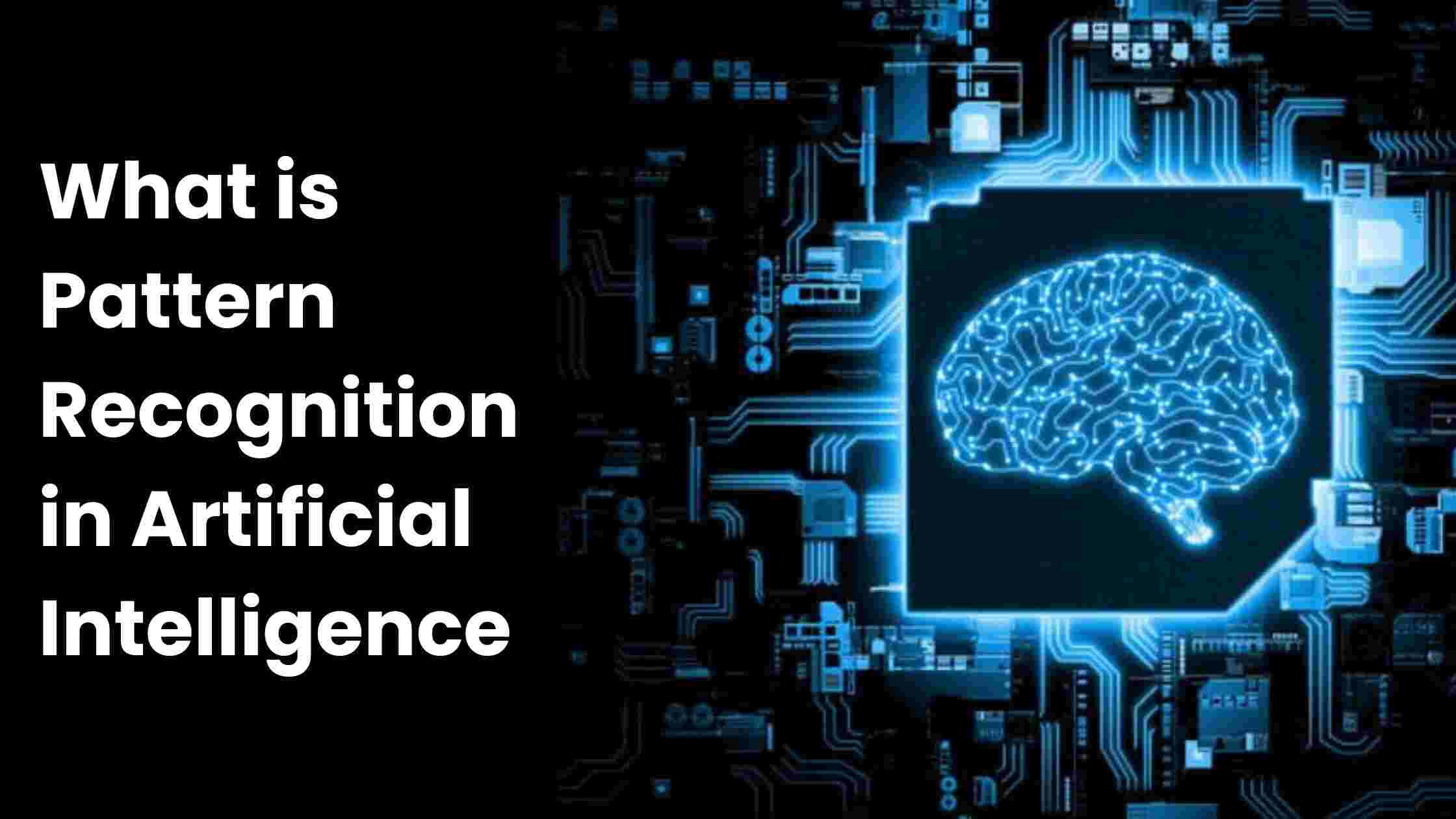Artificial Intelligence (AI) is changing the way we live and work. One key part of AI that helps it understand our world is pattern recognition. But what exactly is pattern recognition in Artificial Intelligence?
Pattern Recognition in AI is the ability of machines to learn from data and detect patterns, enabling them to perform predictions and categorization tasks.
In this post, we’ll break down pattern recognition in AI, explore how it works, and look at some cool ways it’s used today. Let’s dive in and uncover the secrets behind this interesting aspect of AI!
Table of Contents
- What is Pattern Recognition in Artificial Intelligence?
- How Pattern Recognition Works in AI?
- Applications of Pattern Recognition in Artificial Intelligence
- Benefits of Pattern Recognition in Artificial Intelligence
- Challenges in AI Pattern Recognition
- Future of Pattern Recognition in Artificial Intelligence
- FAQ’s
- Conclusion
What is Pattern Recognition in Artificial Intelligence?

Pattern recognition in AI is like teaching a computer to spot things the way we do. It’s how AI learns to find and understand repeated information in data.
This data can be pictures, sounds, numbers, or words. The AI looks for similarities and differences, just like we do when we group things together.
When you unlock your phone with your face, that’s AI using pattern recognition. It looks at your face and matches it to what it knows about you.
This skill helps AI make smart choices and understand the world around it. It’s like giving AI a superpower to sort through lots of data quickly.
Pattern recognition is important because it helps computers learn from examples and make good guesses about new information.
How Pattern Recognition Works in AI?

Pattern recognition in AI works in a few simple steps:
Step 1. Data Collection
First, the AI gathers lots of examples. These could be images, sounds, or any other type of data.
Step 2. Feature Extraction
The AI then picks out important parts of the data. For faces, it might look at the distance between eyes or the shape of the nose.
Step 3. Learning
The AI uses these features to learn what makes each pattern unique. It creates rules to tell patterns apart.
Step 4. Classification
When the AI sees new data, it uses what it has learned to figure out what it is.
Step 5. Feedback
The AI checks if it got it right. If not, it adjusts its rules to do better next time.
Think of it like learning to spot different dog breeds. At first, you look at lots of dogs. Then you notice things like ear shape or fur type.
Over time, you get better at telling breeds apart, even with dogs you’ve never seen before. This process helps AI recognize speech, read handwriting, and even spot diseases in medical scans.
Applications of Pattern Recognition in Artificial Intelligence
Pattern recognition in AI is used in many cool ways:
1. Face Recognition: Your phone uses this to unlock when it sees your face.
2. Speech Recognition: This is how your smart speaker understands you when you talk to it.
3. Medical Diagnosis: AI can spot signs of diseases in X-rays and scans, helping doctors.
4. Handwriting Recognition: AI can read handwritten notes and turn them into typed text.
5. Fraud Detection: Banks use AI to spot unusual spending patterns that might be fraud.
6. Weather Prediction: AI looks at weather patterns to help forecast future weather.
7. Recommendation Systems: Streaming services use AI to suggest movies you might like based on what you’ve watched before.
8. Traffic Management: AI can recognize traffic patterns to help control traffic lights and reduce jams.
These are just a few examples. As AI gets smarter, we’ll see even more uses for pattern recognition in our daily lives.
Benefits of Pattern Recognition in Artificial Intelligence

Pattern recognition in AI brings a wealth of advantages to our lives and work. Let’s explore some key benefits:
Benefit 1: Supercharged Speed and Accuracy
AI can zip through mountains of data in the blink of an eye, spotting patterns that might take us ages to find. This speed doesn’t come at the cost of quality – AI often catches details we might overlook, leading to more accurate results.
Benefit 2: Automating the Boring Stuff
Remember those repetitive tasks you dread? AI pattern recognition can handle them for you. This frees up time for more creative and important work, boosting productivity across industries.
Benefit 3: Smarter Decisions, Safer World
By recognizing patterns in complex data, AI helps make better decisions. In healthcare, it can spot early signs of diseases. In traffic systems, it can predict and prevent accidents. This leads to a safer, more efficient world.
Benefit 4: Your Personal AI Assistant
Ever wonder how your music app seems to know your taste so well? That’s pattern recognition at work. It learns from your habits to offer personalized recommendations, making services feel tailor-made for you.
Benefit 5: Unlocking New Frontiers
In fields like scientific research, AI’s ability to find patterns in vast datasets is leading to exciting discoveries. It’s opening doors to the knowledge we never knew existed, pushing the boundaries of what’s possible.
These benefits show why pattern recognition is a game-changer in AI technology. It’s not just making machines smarter – it’s making our lives easier, safer, and more exciting.
Challenges in AI Pattern Recognition
While AI pattern recognition is powerful, it’s not without its hurdles. Let’s look at some key challenges:
Challenge 1: The Data Dilemma
Quality data is the fuel for AI, but it’s not always easy to come by. Sometimes, there’s not enough data to train the AI properly. Other times, the data might be biased or inconsistent, leading to flawed results.
Challenge 2: The Complexity Conundrum
Some patterns are incredibly complex. Think about trying to recognize emotions in human speech – it’s tough even for us! AI can struggle with these nuanced tasks, especially when context matters.
Challenge 3: The Black Box Problem
Often, we don’t know how AI reaches its conclusions. This lack of transparency can be a big issue, especially in critical areas like healthcare or law enforcement.
Challenge 4: Keeping Up with Change
Patterns in the real world can change over time. AI needs to adapt to these shifts, which isn’t always easy to program.
Challenge 5: The Ethics Equation
Pattern recognition raises important ethical questions. For example, facial recognition technology has sparked debates about privacy and surveillance.
Challenge 6: Resource Requirements
Advanced pattern recognition often needs serious computing power. This can be expensive and energy-intensive, making it challenging for smaller organizations to use.
These challenges show that while AI pattern recognition is amazing, it’s still a work in progress. As technology advances, we’re finding new ways to tackle these issues and make AI even more reliable and useful.
Future of Pattern Recognition in Artificial Intelligence
The future of pattern recognition in AI looks bright and exciting. As technology advances, we can expect to see some amazing developments.
One big trend is the move toward more human-like understanding. AI might soon recognize not just what’s in an image, but the story it tells.
We’re also likely to see AI that can learn from less data. This could make pattern recognition more accessible and reduce the need for massive datasets.
Another exciting area is multi-modal recognition. This means AI can understand patterns across different types of data – like matching a voice to a face.
Privacy-preserving techniques are becoming more important. Future AI might be able to recognize patterns without accessing sensitive personal data.
In healthcare, AI could spot diseases earlier and more accurately. Imagine an AI that can predict health issues before symptoms even appear!
FAQ’s
Data mining AI applications are commonly used to detect patterns in large datasets. These tools can sift through massive amounts of information to find meaningful trends and insights.
The three main types of pattern recognition are Statistical pattern recognition, Syntactic pattern recognition, and Neural pattern recognition.
In AI, there are generally four main types of recognition which are Image recognition, Speech recognition, Pattern recognition, and Facial recognition.
Conclusion
In conclusion, pattern recognition in AI is a powerful tool that’s shaping our future. From unlocking our phones to predicting diseases, it’s making our lives easier and safer. While challenges exist, the potential for growth is enormous. As AI continues to evolve, pattern recognition will play a crucial role in creating smarter, more efficient systems. It’s an exciting time for AI, and pattern recognition is at the heart of this technological revolution.


1 thought on “Pattern Recognition in AI: How It Works and Applications”